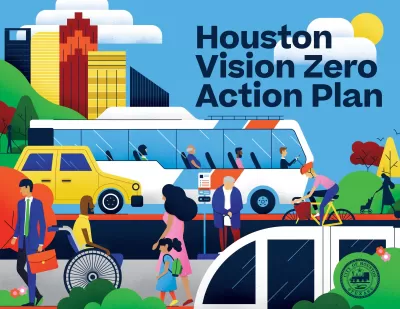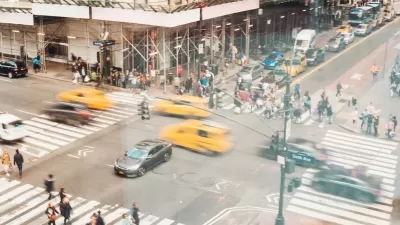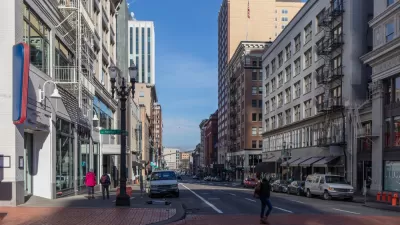In Houston, 60 percent of serious automobile crashes occur on 6 percent of the city's streets. A New Vision Zero Action Plan will focus safety improvements on those streets with a high density of traffic deaths and serious injuries.

The city of Houston this week launched a new Vision Zero Action Plan (VZAP) "to end traffic deaths and serious injuries by 2030 and improve street safety and equity for road users of all ages, abilities and modes of transportation," according to a press release from the office of Mayor Sylvester Turner.
"More than 200 people die and nearly 1,000 people are seriously injured in crashes on Houston roadways every year," according to the press release.
The launch of the VZAP comes over a year after the city committed to Vision Zero. "After extensive data analysis, community engagement and multiagency collaboration, the City of Houston created the Vision Zero Action Plan."
According to the press release, that analysis included mapping out rates of fatalities and serious injuries in traffic collisions.
The city's Planning and Development Department will spearhead the coalition of city and regional agencies tasked with four key goals to achieve Vision Zero: 1) create a safe, equitable, and accessible network of streets, 2) make walking, rolling, and biking safe, 3) make connecting to transit safe, and 4) make driving safe.
FULL STORY: Mayor Turner launches Vision Zero Action Plan to eliminate traffic deaths in Houston by 2030

Trump Administration Could Effectively End Housing Voucher Program
Federal officials are eyeing major cuts to the Section 8 program that helps millions of low-income households pay rent.

Planetizen Federal Action Tracker
A weekly monitor of how Trump’s orders and actions are impacting planners and planning in America.

Ken Jennings Launches Transit Web Series
The Jeopardy champ wants you to ride public transit.

California Invests Additional $5M in Electric School Buses
The state wants to electrify all of its school bus fleets by 2035.

Austin Launches $2M Homelessness Prevention Fund
A new grant program from the city’s Homeless Strategy Office will fund rental assistance and supportive services.

Alabama School Forestry Initiative Brings Trees to Schoolyards
Trees can improve physical and mental health for students and commnity members.
Urban Design for Planners 1: Software Tools
This six-course series explores essential urban design concepts using open source software and equips planners with the tools they need to participate fully in the urban design process.
Planning for Universal Design
Learn the tools for implementing Universal Design in planning regulations.
Ada County Highway District
Clanton & Associates, Inc.
Jessamine County Fiscal Court
Institute for Housing and Urban Development Studies (IHS)
City of Grandview
Harvard GSD Executive Education
Toledo-Lucas County Plan Commissions
Salt Lake City
NYU Wagner Graduate School of Public Service





























